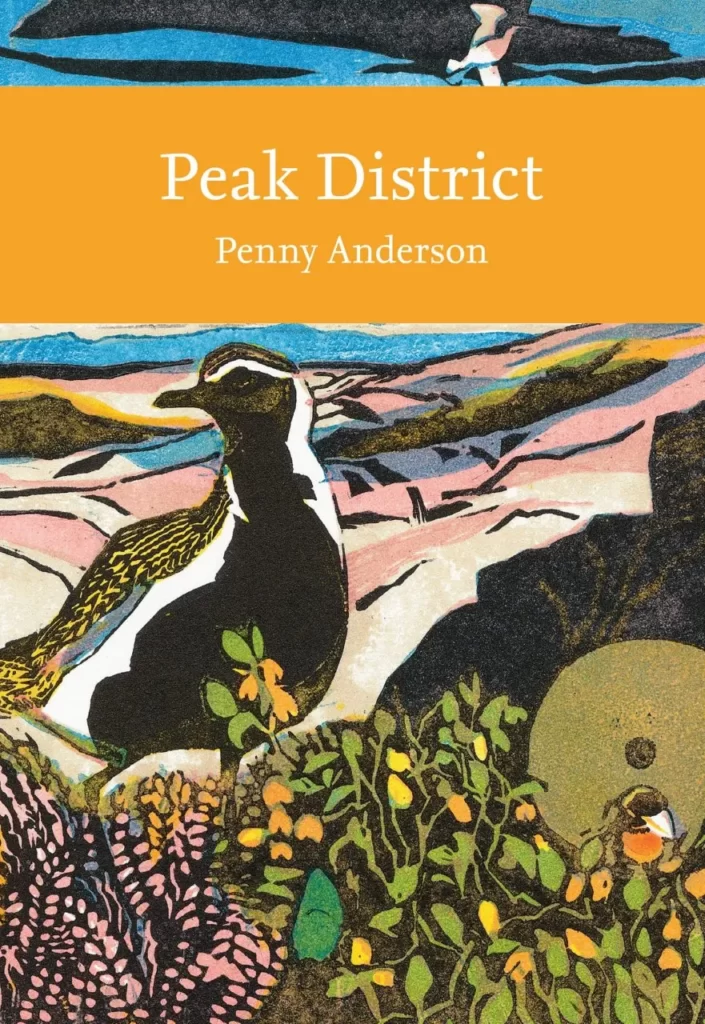Authors generally write for their contemporaries, so it is perhaps sobering for them to realise that most readers of a good book reside not in the present but in the future. Their reading of it will be very different from that of those who turn the newly published pages. Take two examples from the Peak District. Charles Moss, author of The Vegetation of the Peak District (1913), was eager to understand the ‘fundamental units of vegetation’, and so his book has become an important source for those studying the early days of ecology. Likewise, The Peak District (1962), by the geographer K. C. Edwards, reveals much about contemporary thinking on Britain’s first National Park, and although it was the 44th volume in the Collins New Naturalist series its cursory treatment of fauna may surprise the modern reader.
Exactly 100 volumes on, the Peak District now has a new title in the series, published at the close of the National Park’s 70th-anniversary year. The author is well placed to take the story forward, having previously co-authored (with David Shimwell) the only substantial work on the Peak District’s vegetation since Moss. This new book, too, was planned as a joint venture, but Derek Yalden, to whom it is dedicated, died in 2013 before it could be started. The editors include a tribute of their own to Robert Gillmor, who has stepped down as the series’ artist. The dust-jacket illustration for this volume, by Robert Greenhalf, portrays a Golden Plover, reflecting the author’s specialist interest in moorlands.
Inside is a book that takes an ecological perspective, with species integrated into descriptions of the main habitats. The introductory chapters sketch out the region’s key features and its three landscapes: the White Peak of the limestone, and the gritstone and shale areas that flank it in the Dark Peak and the South West Peak. These take the book’s geographical scope beyond the boundary of the National Park, which excludes some of what the author refers to as ‘our Peak District’. This use of the possessive makes for a very personal account that instantly engages those of us familiar with ‘our area’; but newcomers are made equally welcome and will find the gazetteer of locations useful as they head off in the company of their capable guide. It is a journey that begins, as regional natural histories invariably do, with geology, followed by geomorphology and an environmental history since the last glaciation. A key factor in the ecology of the Peak District is its position at the southern end of the Pennines, where many northern species are at their southern limit and many southern species peter out; this ‘accident of geography’ gets its own chapter.
The writing of a regional natural history inevitably involves drawing on the work of others, and this has been skilfully blended with the author’s substantial first-hand experience. There are a few places, however, where things may have been misinterpreted, so be wary of, for example, references to packhorse routes in the Iron Age, or the expanding range of the Silver-spotted Skipper. Overall, though, this is a very thorough and engaging account of the Peak District’s natural history, with a text that is brought alive by numerous cultural references. For example, while discussing peat formation in the Atlantic period, there is a necessary diversion into the biology of Sphagnum mosses, but the narrative then arcs across the centuries to the First World War, when the mosses were used in wound dressings. The author’s fondness for the region’s blanket bogs is apparent, and this is where the seven chapters on Peak District habitats begin, before moving progressively downhill to finish with rivers and ponds on the limestone.
Every generation that writes about the Peak District has its issues of concern. For Moss it was smoke pollution, and for Edwards access to the countryside. For us it is the biodiversity crisis and the climate emergency, which are both addressed in the final chapter. It is unclear how our woodlands will change as a result of Ash Dieback, or how many species will be lost because of a warming climate. Readers of the book in the future may know, and in the penultimate sentence they are posed a question about the region: ‘Is it still highly distinctive and special?’ We cannot know their answer, but we can be sure that they will learn a great deal about the Peak District, and probably much about us and what we think about the area today. They will certainly have a good book in their hands.

